Talking Quilts with Eli Leon ~ Rosie Lee Tompkins
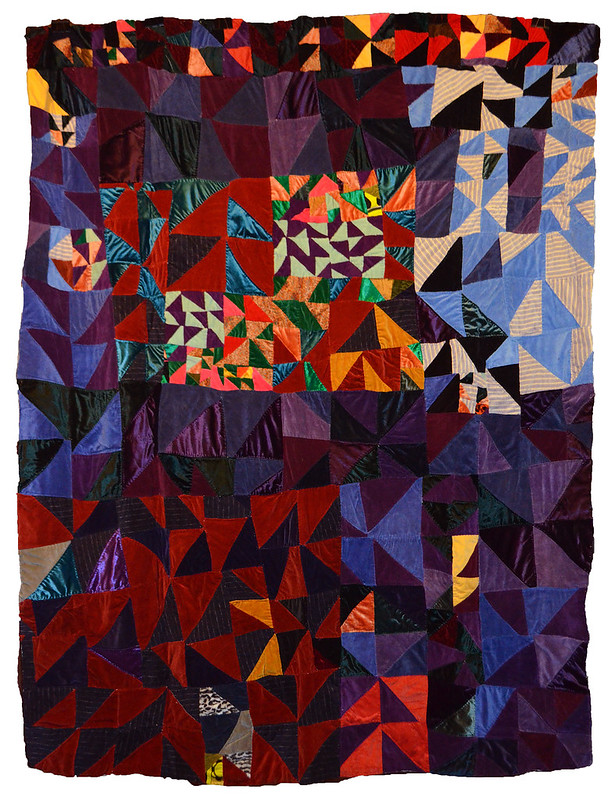
Eli Leon surprised me with this amazing quilt by Rosie Lee Tompkins. He has over a hundred quilts by Rosie Lee and considers this to be one of her best - AND it has never been published. This is an exclusive so please pass the word around to your quilting buds!
The first thing I notice and love about this bed sized quilt is the rich intensity of the velvet and the way it deeply absorbs color and reflects light. This dark quilt sparkles!
We both comment on the way light shines and pops out of the darkness. The light blue velvet combined with the pillow ticking in the top right corner is so unexpected --almost like a patch of sky peaking through the rust/purple/green triadic colors of an autum canopy.
Rosie Lee is confident in the way she patches together large expanses of dark values with only slight shifts of intensity. Personally I shy away from doing such a thing, afraid that my patterns will get lost. Yet the rich field of darkness she creates becomes a ground for her bold bright patches to stand fearlessly.
Eli points to the "huge number of changes in stuff that is very similar." For instance, some of the triangular "half squares" as Eli calls them, vary in size tremendously. Sometimes the scale shifts from section to section, and in the light blue section, for example, there are scale shifts within the section.
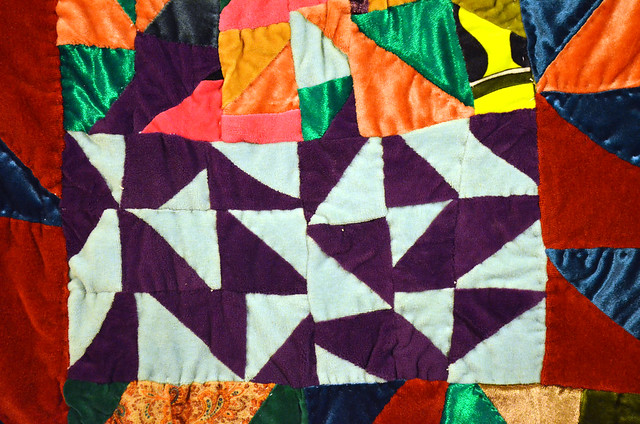
Rosie Lee has created floating sections within floating sections. There is a sense that the microcosm gets bigger as the pattern of sections within sections repeats --almost spiraling. It's simply beautiful. It's fractal.
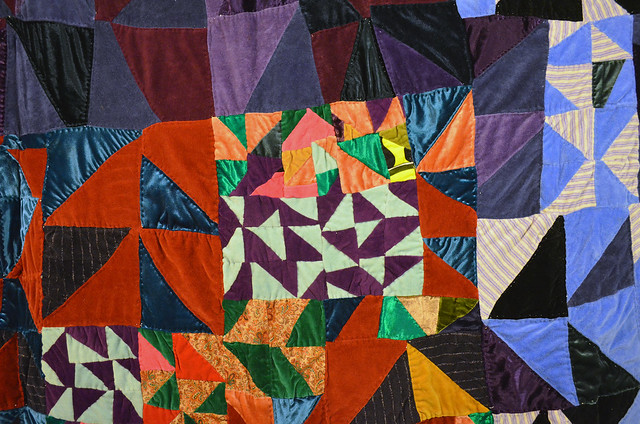
Personally I have a difficult time sewing with triangles, because they are so pointy, I don't feel very free with them and they usually come off stiff and precise. In Rosie Lee's hands they are fluid. Lots of times the points of her triangles are cut off by seams. They fragment like the reflected light of a jewel.
We notice that there is a single "border" at the top. It's clear that the quilt is made in sections but it is difficult to determine the actual construction sequence. This is due to the way Rosie Lee bleeds colors from one section to the next.
I love Eli's enthusiasm for a beautiful quilt, "Something I just noticed for the first time...
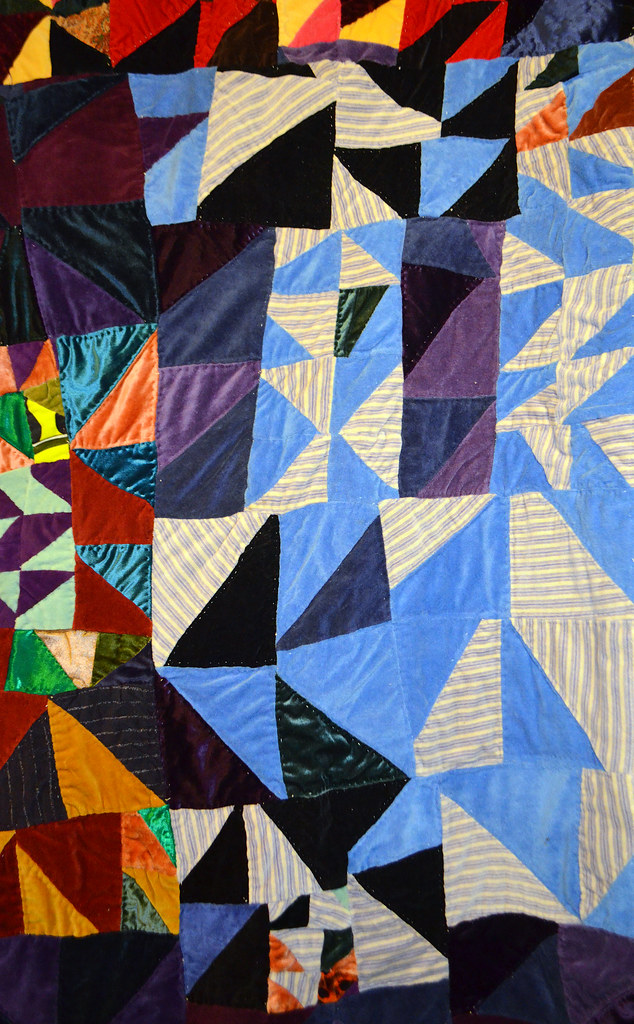
I like almost a million things about the quilt. It's that I just feel so great when I'm passing that (the dark-blue bleeds in the light blue section)-- when I'm looking up there and see that, even if I don't recognise that its both this or that, it just turns me on, and that's been happening with a million things here.
We both agree that there are parts of this quilt that look three dimensional. Eli points out how Rosie Lee will add completely unexpected fabrics to the quilt like the leopard print at the bottom left center, or this very busy print in the top middle --one-of-a-kind elements in contrast to the mostly solid fabrics used through out, that never-the-less blend effortlessly with the whole. I declare that I would never feel free to that and Eli says, "Yes but it works beautifully!"
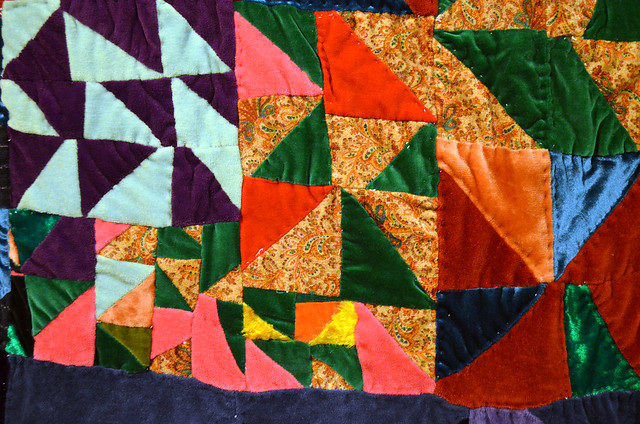
I ask Eli about Rosie Lee's personality, "Was she confident?" He says she was more than confident. She never looked for help or approval with her quilts. However she was also a critic of her own work. She could pick out her best, the ones that were "perfect" and others that she thought could be better.
In the end the thing that makes this quilt so extraordinary is the sense I get that it seems chaotic yet feels completely ordered. Eli didn't see anything chaotic about it but could see what I meant. He declares it "fabulously ordered."
When asked about her process Rosie Lee said she could picture the outcome before she began. I'd say she was a master at communicating her rhythm of attention.
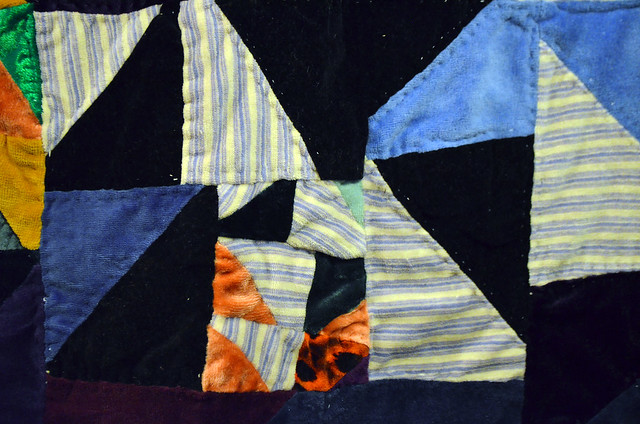
Listen to our conversation
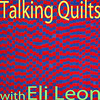
So what do you see? Please join the conversation! Check out the archive Talking Quilts with Eli Leon for more exclusive insights on improvisational quilts from Eli's extensive African-American collection.
